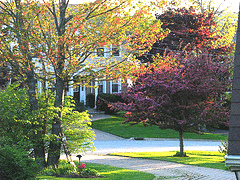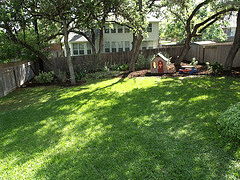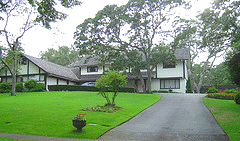Selecting the Right Trees
Before selecting trees, evaluate your landscape and gardens. Do you need shade or privacy? Are you trying to add interest or fill a barren spot? Or do you just have a favorite tree you want included in your landscape?
Then consider the variety of forms available in trees to determine which can best serve your purpose, as well as the vast differences in mature size that is available. A large tree that spreads wide provides a large expanse of shade. A smaller tree that spreads into a “flattened” oval is a wonderful focal point. A row of low growing trees can provide privacy screening or shelter from wind.
The size of the tree you select is one of your most important considerations. Always make sure you give a large tree plenty of room. It is always hard to imagine a young tree growing to 80 feet tall. And don’t forget that large roots, as well as the branches, spread very wide. If your tree reaches 40 feet wide when full grown, plant it more than 20 feet from your home. You will avoid expensive tree trimming to remove high branches interfering with your home, dropping leaves into your gutters, and the large roots will have plenty of room to spread and keep the tree healthy without threatening the foundation of your home.
Whatever size tree you select, all but the smallest ornamental trees will cast some shade. Carefully consider just how much shade will be created and where the shade will fall through the day and through the seasons. The changing position of the sun throughout the year will cause the shade to fall dramatically different in each season. You may want certain windows shaded from the hot summer sun, but will precious winter sunshine also be lost? Generally when trying to block summer heat, aim to shade from the later afternoon sun. The summer sun is generally quite high overhead, so midday the shade will primarily fall “down“ around the tree rather than shading your house. Positioned slightly toward the west, the hottest late day sun will be blocked. The later day sun is also beginning to fall in the sky, casting a much longer shadow as it falls. The winter sun is positioned much lower in the southern sky (for those of us in the Northern Hemisphere), so if your tree is not directly in front of the windows, you should still receive mid day sun. And don’t forget, when the tree grows up, it will shade planting areas also! A nearby shrub that requires full sun will do fine for a while, but eventually may not thrive in the shade of your tree.
And finally, what feeling do you want to create with your trees? Trees can create a lot of character for your property. Do you want bright foliage or dark green? Dense shade and privacy or light and airy open foliage? Fine fluttering leaves? Spring blooms? Autumn berries or seeds? Rich autumn color? Interesting bark? Each tree you plant can provide new interest to your home, from small accent trees to towering shade trees.


